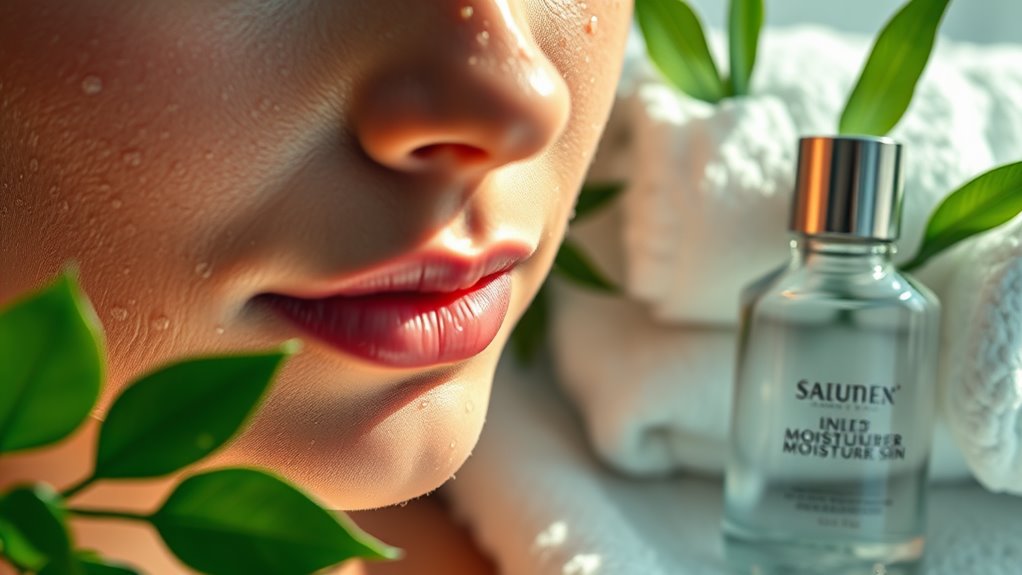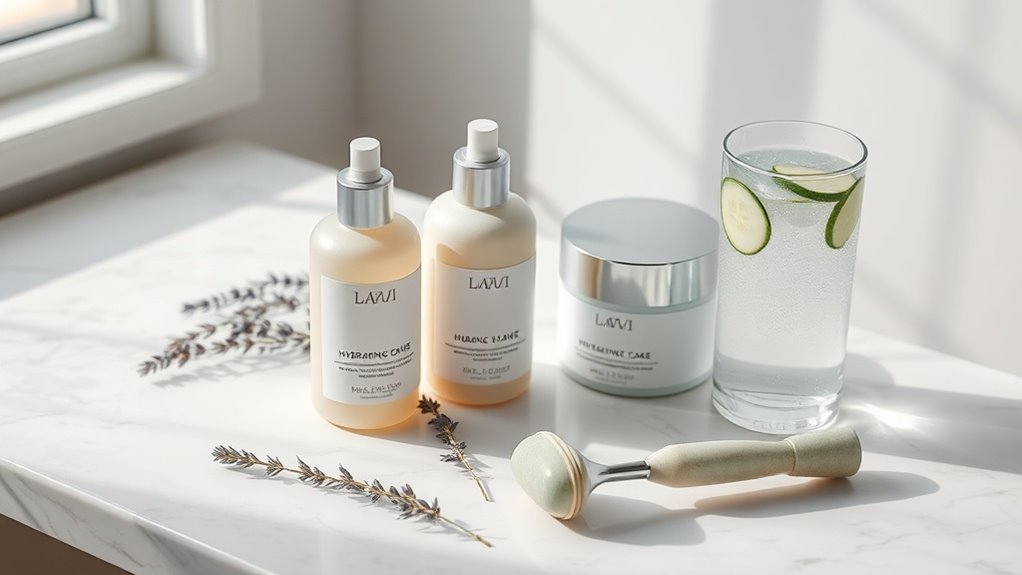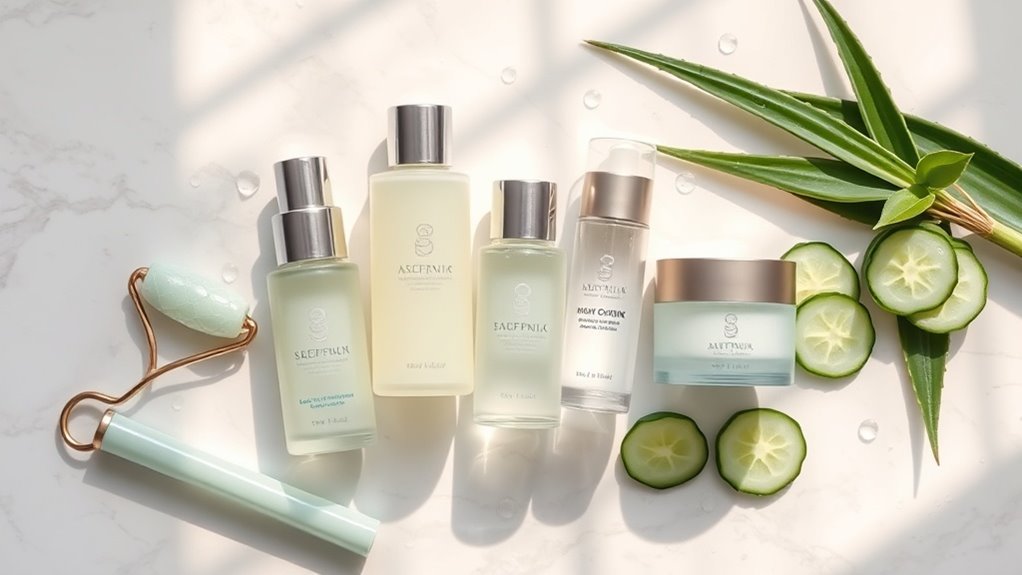Is Your Skin Crying for Moisture. Try This Routine
If your skin feels dry, tight, or lacks luster, it’s likely signaling a need for more moisture. Understanding your skin’s unique hydration needs is crucial in creating an effective routine. Start with the right cleansing method and don’t underestimate the importance of exfoliation. Choosing a suitable moisturizer can make all the difference. But what specific products and techniques should you consider for optimal hydration? The next steps will guide you towards achieving a more radiant complexion.
Key Takeaways
- Determine your skin type to tailor your moisturizing routine effectively, ensuring you choose the right products for optimal hydration.
- Use a gentle, hydrating cleanser with ingredients like glycerin or hyaluronic acid to avoid stripping moisture from your skin.
- Exfoliate 1-3 times weekly to remove dead skin cells, promoting better moisture absorption and enhancing skin texture.
- Apply moisturizers on damp skin to lock in hydration, and select products suited for your specific skin type.
- Incorporate hydrating treatments like serums, sheet masks, or facial oils to deliver extra moisture and improve skin barrier function.
Understanding Your Skin’s Moisture Needs
How well do you understand your skin’s moisture needs?
Knowing your skin type is crucial for establishing an effective moisturizing routine for dry skin.
This routine should include a hydrating cleanser, rich moisturizers, and targeted treatments with ingredients like hyaluronic acid and glycerin.
A proper moisturizing routine features hydrating cleansers, rich moisturizers, and targeted treatments with hyaluronic acid and glycerin.
Apply moisturizers while your skin’s still damp to lock in hydration.
Don’t forget to consider seasonal changes, as dry air can exacerbate your skin’s moisture loss.
Regularly assess your skin’s response to products, adjusting your routine as needed to ensure your skin stays nourished and healthy. Additionally, be mindful of common mistakes that can worsen dryness, such as using harsh cleansers or over-exfoliating.
Prioritizing these factors will help maintain optimal moisture levels.
Essential Cleansing for Hydration
What steps are you taking to ensure your cleansing routine supports hydration?
Start by choosing a gentle, hydrating cleanser that won’t strip your skin of its natural oils.
Look for ingredients like glycerin or hyaluronic acid, which attract moisture.
Cleanse your face twice daily, but avoid over-cleansing, as it can lead to dryness.
Use lukewarm water instead of hot, as hot water can dehydrate your skin further.
After cleansing, pat your skin dry with a soft towel and immediately apply a hydrating toner or essence to lock in moisture.
Incorporating gentle cleansing into your routine sets the foundation for optimal skin hydration.
This essential cleansing routine sets the foundation for optimal skin hydration.
The Power of Exfoliation
When should you incorporate exfoliation into your skin care routine?
Aim to exfoliate 1-3 times a week, depending on your skin type and sensitivity.
Exfoliation removes dead skin cells, promoting cell renewal and enhancing moisture absorption. The vital role of exfoliation is often overlooked, yet it is essential for maintaining healthy skin.
Here are some key benefits:
-
Improves skin texture: Smooths rough patches for a radiant look.
-
Unclogs pores: Reduces the risk of breakouts and blackheads.
-
Enhances product efficacy: Allows serums and moisturizers to penetrate deeper.
-
Boosts circulation: Promotes a healthy glow and radiance.
-
Minimizes fine lines: Helps reduce signs of aging, revealing fresher skin.
Incorporate this vital step for optimal hydration results.
Choosing the Right Moisturizer
Choosing the Right Moisturizer
Selecting the right moisturizer can significantly impact your skin’s hydration levels and overall health. Begin by identifying your skin type—oily, dry, combination, or sensitive.
For oily skin, opt for lightweight, oil-free formulas; for dry skin, richer creams with ingredients like hyaluronic acid or shea butter work best. If you have sensitive skin, look for fragrance-free options with soothing ingredients like aloe vera.
Always check the label for non-comedogenic products to avoid clogged pores.
Additionally, consider your climate—thicker moisturizers may be necessary in colder months, while lighter options suffice in warmer weather. Understanding moisturizing ingredients ensures optimal skin hydration. Tailoring your choice ensures optimal skin hydration.
Incorporating Hydrating Treatments
Incorporating hydrating treatments can significantly boost your skin’s hydration.
Here are some effective options to consider:
-
Hydrating Serums: Look for ingredients like hyaluronic acid and glycerin for deep moisture.
-
Sheet Masks: These provide an intensive treatment, delivering hydration directly to your skin.
-
Facial Oils: Use lightweight oils to lock in moisture and enhance barrier function.
-
Water-Based Mists: Refresh your skin throughout the day with a hydrating mist.
-
Overnight Masks: Apply before bed for a nourishing boost while you sleep.
Integrate these into your routine for optimal results. Additionally, consider trying a DIY mask that can provide instant relief from dry skin, enhancing your overall hydration approach.




